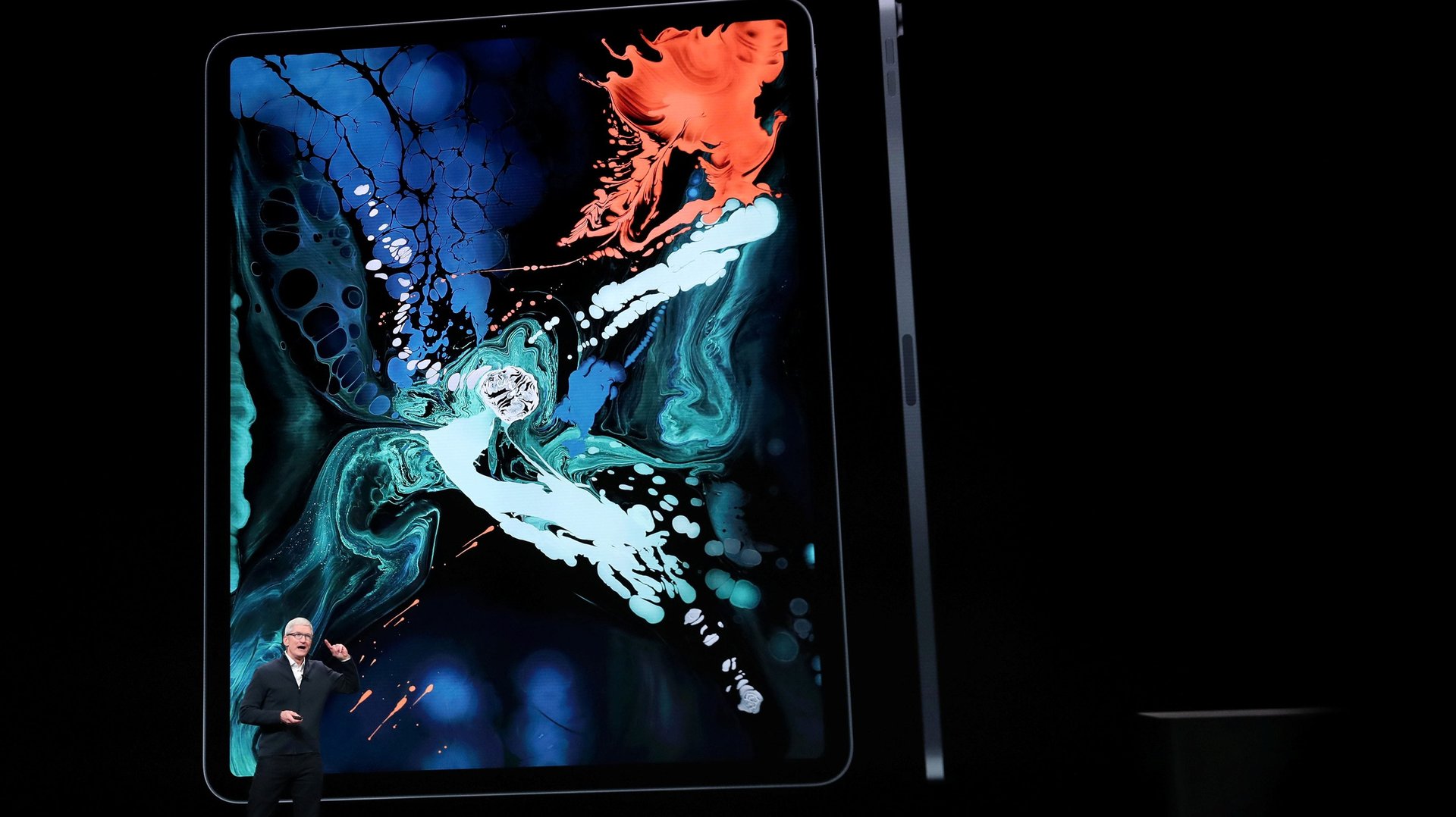Reviewers say the new iPad Pro is giving your laptop a run for its money
When Apple unveiled the new iPad Pro last week, Apple CEO Tim Cook called the tablet a computer. With an 11-inch iPad Pro starting at $799 and a 12.9-inch model at $999, the prices are certainly in line with laptops, but do its new features live up to being an entry-level laptop? Here’s what reviewers have to say about the iPad Pro.


When Apple unveiled the new iPad Pro last week, Apple CEO Tim Cook called the tablet a computer. With an 11-inch iPad Pro starting at $799 and a 12.9-inch model at $999, the prices are certainly in line with laptops, but do its new features live up to being an entry-level laptop? Here’s what reviewers have to say about the iPad Pro.
It’s as powerful as a laptop.
At last week’s event, Apple said that the device is “faster than 92% of all portable PCs sold in the last 12 months.” Many reviewers focused on the iPad Pro’s amazing power. In one show of the iPad Pro’s strength, Mashable’s Raymond Wong exported the same 4K video on multiple devices, and found that it took the new iPad Pro only 54 seconds to complete, beating out a 2017 iPad, iPhone X, the new iPhone XS, and even a 2015 MacBook. The worst contenders: a 2017 Surface Pro (8 minutes, 8 seconds) and a 2014 iPad Air 2 (7 minutes, 18 seconds).
The iPad Pro’s power allows it to handle most features you’d use on a daily basis. FastCompany’ Jesus Diaz says the iPad has been able to handle everything he usually does on a laptop: internet browsing, Netflix, gaming, chatting illustrating, writing, and Skyping. He writes that he’s sold on using the iPad Pro as his new laptop. “If you are thinking that an iPad with a keyboard is a laptop, you are wrong,” he says. “The iPad is better than a laptop.”
…but it’s more cumbersome to multitask.
For many users, it’s not just about whether the iPad can handle daily tasks, but how well you can toggle between them. As I write this, I’m flipping between tabs in my internet browser, my email client, Slack, and Spotify. Wired’s Jeffrey Van Camp says he wrote his review on an iPad Pro, but that “it took [him] longer than normal to do research and collect links—and a good long while to figure out how to do other tasks.” He also notes that other mundane tasks, like attaching files in the Gmail App or using spreadsheets, are difficult to do on an iPad.
But Diaz sees that as a plus for the iPad; an app that takes up the full screen allows for the type of concentration you can’t get when you’ve got a dozen tabs open. If you’re seeking deep focus, the iPad Pro might be worth a try.
If you’re making the switch, you’ll need to buy some new accessories and develop some work-arounds.
The new iPad has moved on from Apple’s Lightning ports to USB-C. If you have a recent iPhone, you can charge it off the iPad Pro, or if you have a recent MacBook, you can use that to charge your iPad Pro. However, plugging flash drives or hard-drives into that USB-C port likely won’t do anything, reports The Verge, because iOS doesn’t really allow external, non-Apple, devices to interface with the iPad. The Verge also reports that the iPad would not connect with printers.
If you haven’t already made the switch to Bluetooth headphones, you’ll have to get a pair to take private calls or listen to music on your iPad Pro, as it lacks a headphone jack.
Apple accessory company Hyper is already capitalizing on the iPad Pro’s lack of jacks by marketing HyperDrive, a device which plugs into the iPad’s USB-C port and adds six other ports, including an audio jack, SD card slot, USB-A and USB-C, for $99.
Other accessories you may want if you’re planning to use the iPad Pro instead of a laptop: Apple’s Smart Keyboard Folio case ($179 for the 11-inch and $199 for the 12.9-inch), and the Apple Pencil ($129). You may also want to spring for more storage, as the base model iPad Pro includes only comes with 64 GB. You can spring for up to 1 TB, but that will run you $1,549.
If you’re intent on replacing your laptop, keep in mind that the price tag will be hefty: A 64 GB 11-inch iPad Pro with a pencil, keyboard, and HyperDrive will cost you around $1,200 (before local sales taxes).